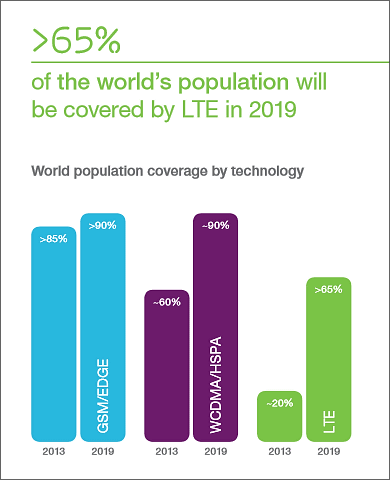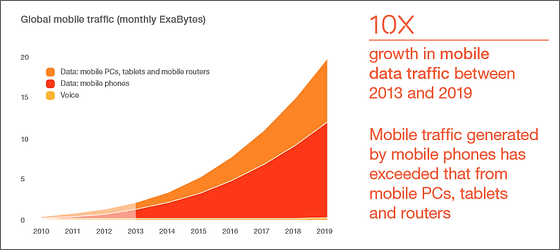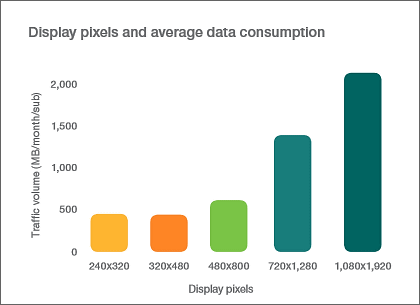Eursson Mobility Report "which shows graphs of mobile market in the near future such as smartphone number of 5.6 billion after five years · transfer amount 12 exabytes · global coverage rate of LTE 65%

Being a Swedish telecommunications equipment manufacturerEricssonHowever, it examined the world's mobile phone market "Ericsson Mobility ReportWe announced. According to the survey report, the number of mobile communications subscriptions in the first quarter of 2014 rose by about 7% from the previous year, the number of mobile broadband service subscriptions increased by approximately 35% in the same period last year, and the number of subscriptions reached 2.3 billion It is.
Ericsson Mobility Report - ericsson-mobility-report-june-2014.pdf
http://www.ericsson.com/res/docs/2014/ericsson-mobility-report-june-2014.pdf
As of the first quarter of 2014, the number of mobile communications contracts worldwide was 6.8 billion. Breakdown of the number of contracts in each region is as follows, and the number of mobile communication contracts is 1,355 million in the Asia Pacific region excluding China and India. It is obviously abnormal figures in the world that China has 1.25 billion contracts in one country.

Ericsson predicts that this number will be 9.2 billion by 2019, about 80% of which will be mobile broadband contracts capable of high speed communication such as LTE.

Looking at the number of mobile communication contracts by region, it is like this. In the Americas and Europe, the number of contracts is almost flat, but in the Asia Pacific region, the Middle East, Africa, etc., the number of contracts is expected to continue to increase even after 2013.

Looking at the breakdown of mobile communication contracts, in the year 2013, the number of smartphones used is about 1.9 billion, and the number of contracts such as tablets and mobile routers is about 300 million. The number of smartphone subscriptions will continue to grow, it is expected to reach 5.6 billion in 2019.

And for mobile communication lines, LTE is presently small in the market as a whole, but by 2019 it will be a service that accounts for about 30% of the total. Currently, 288 LTE services are deployed in 104 countries.

A graph summarizing the share of the communication method currently used in each region and the communication method that will be used in 2019. It can be seen that there is a speech communication method for each region.

The population coverage rate of LTE is about 20% at the stage of 2013, but this is expected to increase to 65% by 2019.

This is a graph showing the change of traffic data of mobile data. While the volume of voice data traffic has remained unchanged from 2010, the amount of data traffic is constantly rising and it is predictable that it will continue to increase in the future. In the first quarter of 2014, the communication fee increased by 65% compared with the same period last year, and these are expected to be deeply involved in the spread of smartphones and the number of applications that need data communication.

Graph showing the predicted traffic volume and future traffic volume forecast.

The amount of traffic used by mobile subscribers as a whole in a month is 1.1 EB (one million times 1 TB) at the stage of 2013, but it is forecasted to increase to 12 EB in 2019.

It is like this when dividing traffic volume by region. You can see that traffic is concentrated in the Asia-Pacific region where there are many subscribers to mobile communications.

The graph showing the breakdown of traffic is as follows, "viewing of movies" accounts for more than 30% of data communication at the stage of 2013, which is expected to increase to about half of the total by 2019 .

To increase traffic volume, smartphones are also deeply involved in making larger screens. This is a graph of data consumption by display size. You can see that the consumption of data is dramatically increasing due to the larger screen.

Related Posts:
in Mobile, Posted by logu_ii







